Shopify
24 minute read
WooCommerce vs Shopify: Battle of the Ecommerce Platforms.
LAST UPDATED:
January 2, 2024


Ecommerce platforms are a dime a dozen these days. WooCommerce and Shopify are two of the most popular, but what are the key differences between them?
For starters, WooCommerce is a WordPress plugin, while Shopify is a standalone platform. WooCommerce is also open source, while Shopify is proprietary.
When it comes to features, WooCommerce and Shopify both have a lot to offer. However, WooCommerce is more flexible and customizable, while Shopify is easier to use and better suited for beginners.
Still not sure which platform to choose? Read on to learn more about the key differences between WooCommerce and Shopify!
WooCommerce

WooCommerce is a popular ecommerce platform built on WordPress, which is a content management system that powers millions of websites and web design projects.
WooCommerce was founded in 2008 as WooThemes, a company that initially specialized in WordPress website themes.
In 2015, WooThemes rebranded as WooCommerce to focus specifically on ecommerce. WooCommerce is known for its flexibility and customization options, which allow small and medium-sized businesses to build the online store they want.
Shopify

Shopify is a Canadian ecommerce company founded in 2004. Shopify began as an online store for selling snowboarding items and has since become a leading ecommerce platform because of its ease of use and comprehensive features.
Shopify allows businesses of all sizes to create an online store and sell their products. Shopify offers a variety of features and tools to help companies grow their online presence and sales.
Shopify has been growing rapidly since its launch and is now used by over one million businesses in 175 countries.
Shopify is a publicly-traded company, and its shares are listed on the Toronto Stock Exchange. This means that Shopify is a reliable and stable platform for businesses.
WooCommerce vs Shopify Pricing: Subscription Costs

WooCommerce is a popular ecommerce platform that enables businesses to sell products and services online.
While the core WooCommerce software is free to download and use, there are some costs associated with running a WooCommerce-powered store.
Specifically, businesses will need to pay for a WooCommerce subscription to receive updates, support, and access to certain features and plugins. A WooCommerce subscription costs from $199.00 per year to $299.00 per year, depending on the level of support and number of add-ons required.
In comparison, Shopify, another popular ecommerce platform, charges a monthly fee of $29.00 for its basic plan, $79.00 for growing businesses that sell online or in-store, and $299.00 for its enterprise plan.
As such, Shopify may be a more cost-effective option for companies that are just starting out or that have limited budgets.
Winner: Shopify
Design & Customization: WooCommerce vs Shopify Features
WooCommerce is a great ecommerce platform for those who want complete control over their online store.
One of the benefits of WooCommerce is that it’s open-source, which means that there are no limits to customization. You can purchase themes from WooCommerce or have a custom theme built to fit your specific needs.
Themes purchased through WooCommerce are organized on their website based on usage, making finding a template easier for customers.
On the other hand, Shopify offers premium and free templates that businesses can use to create their storefront. Themes and templates range from various business types such as clothing and fashion to electronics.
Shopify makes it easy for businesses to find a theme or template that fits their business type. Shopify website redesigns can be done by Shopify web development experts, or businesses can use Shopify’s theme editor to make changes themselves.
Shopify provides an easy way for businesses to create an online presence and start selling products or services to customers.
Once a business has selected a theme or template, Shopify provides options to customize the storefront’s look. This includes adding the business’s branding colors, logo, fonts, etc.
However, the downside of Shopify themes and templates is that they can be limiting. A business may need to hire a Shopify expert if it wants to make significant changes to its storefront.
Therefore, WooCommerce is a good option for businesses that want more control over the look and feel of their online store. After all, WooCommerce allows its customers to use themes in the way they want!
Winner: WooCommerce

“WooCommerce’s integration with WordPress allows the combination of the two to handle page and post management in ways that Shopify cannot. Although Shopify is the better option for a pure ecommerce store, WooCommerce’s association with WordPress allows it to be a better option for sites that are focused not only on products, but also on creating dynamic landing pages and posts.”
Caleb Shultz, Director of Projects
What Types of Options Do You Have in Each?
WooCommerce is a powerful ecommerce platform that provides its users with various options for theme design and customization. WooCommerce offers ready-made themes and templates and the ability to customize existing themes and templates to fit a website’s specific needs.
This flexibility is made possible by WooCommerce’s open-source capabilities, which allow users to access and modify the code of their themes and templates.
As a result, WooCommerce provides its users with a high degree of control over the look and feel of their web design. In addition, WooCommerce’s themes are responsive and optimized for SEO, making them ideal for creating professional-looking online stores.
However, Shopify offers a range of both free and paid-for themes, allowing users to find a design that suits their taste and brand. Moreover, those with limited coding knowledge can still create a beautiful and effective website, as Shopify’s themes are highly customizable.
From changing the color scheme to adding new sections, there are plenty of options for those who want to make their website stand out from the crowd.
As a result, Shopify is an excellent platform for those looking to set up an online shop with minimum hassle.
Winner: Shopify
How Easy Is It To Edit These Websites?

If you have a basic understanding of web coding, then you should be able to edit a WooCommerce website easily. With just a little time and effort, you can add or remove features, change the layout, and customize the look and feel of your site.
If you want to give your business a competitive edge, then customizing your WooCommerce site is a great way to do it.
With a little elbow grease, you can create a truly unique site that reflects your brand identity. And, because WooCommerce is an open-source platform, you have unlimited possibilities for how you can enhance your site.
On the other hand, you can create a Shopify website without any prior knowledge of HTML or website coding, and there are plenty of themes and plugins available to help you customize your page.
Best of all, Shopify makes adding new products and pages to your website easier, so you can quickly scale up your business.
In short, if you’re looking for an ecommerce platform that is easy to use and edit, then Shopify is a great option.
Winner: Both Platforms!
Sales Features
What Types of Discounts and Promotions Can I Offer Out of the Box?
WooCommerce has several discount and promotion options that can be added to their customers’ websites.
One example of these plug-ins is their “Smart Coupon,” which includes types of promotional offers such as discounts, coupons, vouchers, product giveaways, offers, and promotions.
With this WooCommerce pricing plugin, WooCommerce store owners can offer any type of discount or promotion they want on their website to their customers.
On the other hand, Shopify offers a range of different types of discount codes that can be used to incentivize customers and drive sales. The most common type of discount code is a fixed value code, which gives the customer a set amount off their purchase.
For example, a $10 discount code would take $10 off the total purchase price, no matter what the customer buys.
Percentage-off codes are also popular, giving the customer a certain percentage reduction on their total order value.
For example, a 20% off code would take 20% off the final purchase price. Shipping discounts are another type of code that can be used to offer reduced shipping rates on specific products or for orders over a certain value.
Finally, Buy Item A get Item B codes are a great way to promote specific products by offering a discount on one item when another is bought.
For example, Buy Item A and get Item B discount codes might offer a 10% discount on item B when item A is purchased. These are just some of the types of discount codes that Shopify offers out of the box so you can start driving sales and generating more revenue for your business straight away!
In this category, the winner is Shopify because it’s easy for customers to understand and use which means they’re more likely to take advantage of your discounts and offers a broader range of discount options.
Winner: Shopify
How Do I Offer More Advanced Promotions?

If you want to offer more advanced promotions for WooCommerce, the best way to do it is with a plugin. WooCommerce offers several plugins that you can use to extend the functionality of your site and make it more powerful.
For example, some plugins allow you to create coupons, run promotional campaigns, and even offer giveaways. All of these plugins are designed to help you increase sales and grow your business.
As for Shopify, there are several things you can do. First, you can create a promotion using Shopify’s built-in discount engine. This allows you to set up discounts for specific products, collections, or even entire orders. You can also create volume discounts, which give your customers a discount for buying larger product quantities.
Another option is to set up a tiered pricing structure, where different levels of discounts are applied based on the quantity purchased.
Finally, you can use Shopify’s automatic discount feature to give your customers a discount when they spend a certain amount of money in your store. These options allow you to create more sophisticated promotions that will help increase sales and encourage your customers to buy more from your store.
Winner: Both Platforms!

“Shopify provides built-in sales features that help it stand out above WooCommerce including abandoned cart recovery, discount codes, unlimited products, and versatile payment options without the use of plugins or other third-party apps.”
Christi Carnahan, Digital Strategist
Plugins and Integrations
What Does Each Ecosystem Look Like?
The WooCommerce ecosystem is one that is very plugin dependent. This means that there are a lot of developers out there who create WooCommerce plugins and then provide support for their customers. This benefits companies that want to get help with their websites from professionals.
It also allows them to connect with resources that can help them further develop their websites. Whether you’re starting an online store from scratch or looking for ways to improve your existing online presence, the WooCommerce ecosystem has plenty to offer.
In the WooCommerce ecosystem, there are various types of plugins available. Some are designed to add functionality to a website, and some SEO plugins like Yoast SEO are designed to help with the appearance of a website.
There are also several different resources that companies can use to help them further develop their websites.
These resources include tutorials, forums, and blogs. These things can benefit companies that want to ensure that their websites are up to date and looking great.
On the other hand, Shopify comprises three main parts: merchants, the Shopify Partner Program, and the Shopify App Store.
Merchants are Shopify’s customers-they are the ones who create an account and build their own online stores using Shopify’s ecommerce platform.
The Shopify Partner Program is a network of agencies, app developers, designers, and other experts known as ‘Shopify Experts.’ These partners offer their services to help merchants with everything from setting up their stores to marketing automation, social media and design.
Finally, the Shopify App Store is a collection of add-ons that can be purchased to improve your website. These apps are developed by third-party app developers who focus on enhancing the Shopify experience for merchants.
So, that’s the Shopify ecosystem in a nutshell! Merchants use Shopify to build an online store, then they can either do everything themselves or hire someone from the Shopify Partner Program to help them out.
And, if they want to include more than just the basic Shopify features for their store, they can browse the Shopify App Store and add on any theme store apps that they find useful.
Winner: Both Platforms!
What Type of Quality Control Do These Marketplaces Offer?
WooCommerce offers a few different ways to ensure quality control for its customers. They have an extensive support section on their website where customers can ask questions and get answers from WooCommerce staff.
Additionally, they have a resources tab that includes blog articles and guides to help customers develop and troubleshoot their websites.
By offering these resources, WooCommerce makes it easy for customers to get the help they need to create successful online stores.
In addition, WooCommerce provides additional support services for an additional fee.
These services include priority support, expert consultations, and custom development services. By offering a variety of quality control measures, WooCommerce ensures that its customers can get the help they need to create successful online stores.
On the other hand, Shopify offers quality control through support from Shopify Partners and apps available in the Shopify App Store.
Shopify Partners provides support specific to the Shopify experience and is knowledgeable on the platform. This improves the customer experience and gives customers a resource for help setting up their online shop.
The Shopify App Store offers apps that can customize and give their customers a competitive edge over their competitors. Customization options include adding functionality not provided by Shopify out of the box or simply offering a different look and feel than what is possible with the default themes.
Quality control is important to Shopify because it offers merchants a way to stand out from the competition and provide a better experience for their customers.
In turn, this helps to build brand loyalty and repeat customers.
Winner: Shopify
SEO
What SEO Functionality Does Each Platform Offer by Default?
WooCommerce is a platform for building ecommerce websites that are built on WordPress. As a result, it inherits all of the excellent SEO functionality that WordPress offers.
However, customers are responsible for ensuring that their website is adequately configured to take advantage of all available SEO features.
In addition, customers may need to make additional changes to their website to optimize it for ranking on Google and other search engines.
However, out of the box, WooCommerce provides everything you need to build an SEO-friendly ecommerce website.
As for Shopify, it offers its users a lot of functionality in terms of SEO. For starters, Shopify suggests that customers tailor their content and website structure to improve their SEO.
Additionally, Shopify recommends looking into additional factors over time to improve SEO, such as the number of natural links linking to your store from other websites and the authority your website has based upon engagement.
Overall, Shopify provides users with many tools and advice to help them optimize their website for better SEO.
Winner: WooCommerce
Payment Options and Transaction Fees
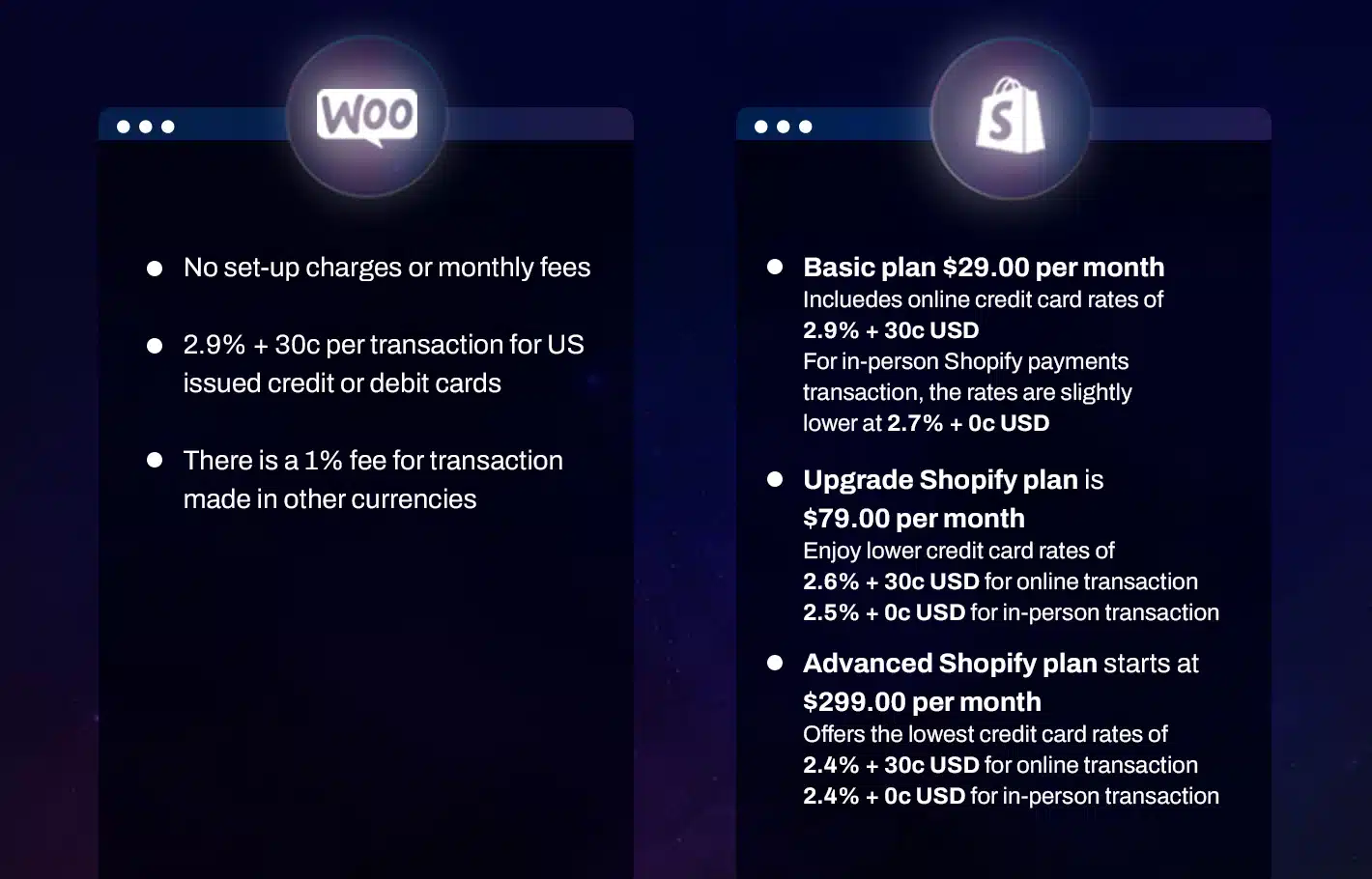
As any online business owner knows, being able to accept payments is essential. Fortunately, WooCommerce makes it easy to take payments and there are no set-up charges or monthly fees. You’ll just pay a transaction fee of 2.9% + 30c per transaction for U.S.-issued credit or debit cards.
There is a 1% fee for transactions made in other currencies, but this is a small price to pay for the convenience and security of using different WooCommerce payment options.
If you’re looking for a payment processing solution that is easy to set up and has no hidden fees, WooCommerce is an excellent option.
Plus, you can rest assured that your transactions are secure.
On the other hand, Shopify has three set package subscriptions, which have their own payment methods and transaction fees.
The Basic plan starts at $29 per month and includes online credit card rates of 2.9% + 30c USD. For in-person Shopify payments transactions, the rates are slightly lower at 2.7% + 0c USD.
If you upgrade your Shopify plan, you’ll pay $79 per month but enjoy lower credit card rates of 2.6% + 30c USD for online transactions and 2.5% + 0c USD for in-person transactions.
Finally, the Advanced Shopify plan starts at $299 per month and offers the lowest credit card rates of 2.4% + 30c USD for online transactions and 2.4% + 0c for in-person transactions.
Winner: Both Platforms!
Shipping and Fulfillment
What Options Are Out There for Each, and How Do They Work?
As any online retailer knows, shipping is vital to the business. It’s important to offer various shipping options to customers and make sure that those options are easy to understand and use. That’s where WooCommerce comes in.
WooCommerce offers a plugin for WordPress websites that transforms them into an online store. Via this plugin, the company can set shipping options, methods, and rates.
This makes it easy for customers to choose the shipping method that best suits their needs and helps ensure that orders are fulfilled quickly and efficiently.
In addition, WooCommerce offers several features that make inventory management and tracking orders easy.
As a result, the company can offer its customers a top-notch shipping and fulfillment experience.
On the other hand, Shopify has a process for shipping and fulfillment that includes inventory storage, order packing and delivery preparation, delivery to customers, and dealing with returns, inspections, and shipment tracking. They have a network of fulfillment centers that help distribute products globally.
This allows businesses to focus on their core competencies and leave the shipping and fulfillment to Shopify. Returns are also handled through this process, making businesses more efficient.
In the end, Shopify’s goal is to ensure that products are delivered to customers on time and as expected.
Winner: Shopify

“When it comes to marketing tools, Shopify’s multichannel integrations easily allows you to stand up sales on other channels including Amazon and social, whereas WooCommerce requires extensions and plugins for each. Shopify streamlines the process.”
Christi Carnahan, Digital Strategist
WooCommerce Dropshipping vs Shopify Dropshipping
Both Shopify and WooCommerce offer hundreds of themes, many of which are free.
Businesses who choose WooCommerce to build an online store will have to invest more time in setting up and maintaining their store, as there are no built-in features or support available.
However, WooCommerce does offer more flexibility when it comes to adding WooCommerce extensions, customization, and adding plugins to your store.
Shopify, on the other hand, offers a turnkey solution for dropshipping businesses. All of the Shopify features you need are available out of the box, and there is 24/7 support available if you run into any problems.
The downside is that Shopify price plans can be more expensive than WooCommerce, especially if you need to add extra features or ecommerce plugins to your store.
Shopify is a popular ecommerce platform among dropshippers due to its dedication to customer support. Store owners can contact the Shopify support team via phone, email, and live chat, and assistance is available 24/7.
WooCommerce, on the other hand, won’t give you any official help from the support team. This can be a problem if you encounter an issue with your WooCommerce store.
Dropshippers rely on quick and efficient customer support in order to keep their ecommerce business running smoothly, so it’s important to choose a platform that can provide this.
Shopify’s commitment to customer support makes it the better choice for dropshippers.
Winner: Shopify
Security
How Is Security Managed in Each Platform?

As the world’s second most popular ecommerce platform, WooCommerce websites handle sensitive customer data. This includes credit card numbers, shipping addresses, and order histories. As a result, WooCommerce customers need to take steps to secure their websites.
The good news is that WooCommerce itself is a very secure platform. All data is encrypted when it’s stored and strict security protocols are in place to protect against hackers and data breaches.
However, the security of a WooCommerce website is also heavily dependent on the actions of its owner.
For example, using strong passwords, keeping software up-to-date, and installing security plugins can all help to make a WooCommerce website more secure.
Ultimately, the best way to protect a WooCommerce website is to stay vigilant and take steps to ensure that it’s always as secure as possible.
Shopify manages security in various ways. Each Shopify website and subscription includes an SSL certificate. This encrypts the information that flows between the customer and the site.
They are also PCI-DSS compliant, which means they follow the standards for processing credit card information online.
Shopify does this directly rather than having a third-party website process credit card information. This ensures that sensitive customer data is stored securely and protects against potential threats such as fraud or data breaches.
In addition, Shopify provides 24/7 monitoring of their system so they can quickly identify and resolve any issues that may arise.
By taking these measures, Shopify provides a secure platform for businesses to sell their products and services online.
Winner: Shopify
Maintenance Costs/Long-Term Support
How Frequently Do We Need To Worry About Updates?
WooCommerce is a platform that gives users a lot of control. This can be great for those who want to be able to customize their shop to match their brand and style perfectly.
However, it also means that users are responsible for keeping their site up-to-date.
The WooCommerce platform itself doesn’t need to be updated often, but any additional plug-ins or add-ons will need to be updated as required. This can be a bit of a hassle, but it’s essential to ensure that all components of your site are up-to-date to keep your data safe and your customers happy.
On the other hand, Shopify is a reliable and well-supported platform, meaning that updates are not something customers need to worry about regularly.
New features are often introduced through updates, but these are typically not noticeable to users. Any additional features may be subject to updates as needed.
Winner: Both Platforms!
Do the Platforms Themselves Offer Support?
If you’re looking for ecommerce platforms that offer great support, then you can’t go wrong with WooCommerce or Shopify.
WooCommerce offers support via online chat, phone, and email. In addition, they have a resource tab on their website that provides additional knowledge to their customers.
If you cannot find the answer to your question on the website, then the support team will be more than happy to help you.
On the other hand, Shopify offers support to their customers through 24/7 online chat, via phone, and via email.
They also have a great resource section on their website that can answer any questions. Their resources include video explanations to questions their customers might have as well.
Overall, Shopify’s support is excellent and offers many ways for customers to get help when needed.
Winner: Both Platforms!
How Many Developers Are There Out There That Know How To Work on Each Platform?
As one of the most popular ecommerce platforms available, WooCommerce boasts an impressive number of active installations-and an equally impressive number of developers.
While some may specialize in creating themes or plugins, others may focus on providing support or customizing existing WooCommerce sites. No matter their area of expertise, all WooCommerce developers share one thing in common: a deep understanding of how the platform works.
As for Shopify, 42,200 Shopify Partners know how to work on the Shopify platform, meaning there’s no shortage of developers who can create themes, apps, and customizations for Shopify stores.
We’re one of the many Shopify Partners who know how the platform works. Feel free to contact us and ask any questions you may have about Shopify.
Winner: Both Platforms!
B2B ecommerce
Assuming your company is already set up with a WordPress account, WooCommerce can be easily installed as a plugin.
Upon activation, you will be guided through a quick setup process where you can select your business location, currency, and taxes. After that, you’re ready to start adding products! You can add products manually or import them in bulk using a CSV file.
You can set a price, shipping cost, description, and other attributes for each product. Once your products are set up, you’re ready to start taking orders! Customers can purchase products directly from your website, and you can choose to accept payments via PayPal or Stripe.
WooCommerce also offers several B2B customer management options, including creating roles with specific permissions, setting up user accounts with customer notes, and managing orders with Bulk Actions.
Overall, WooCommerce is a flexible platform that can be adapted to suit various ecommerce needs.
As for Shopify, it allows businesses to add pages as they need them easily.
So, if a business needs additional product pages or blog pages, they can easily be added without starting from scratch.
Plus, Shopify offers a variety of features that help businesses streamline their purchase processes. For example, businesses can set up accounts for their customers so that they can easily save their information for future purchases.
In addition, businesses can offer discounts and promotions through Shopify’s built-in tools.
In this category, Shopify is more user-friendly compared to WooCommerce.
WooCommerce offers many features and customization options, which can be overwhelming for some users.
With Shopify, businesses can easily get started without feeling overwhelmed by the options.
Winner: Both Platforms!
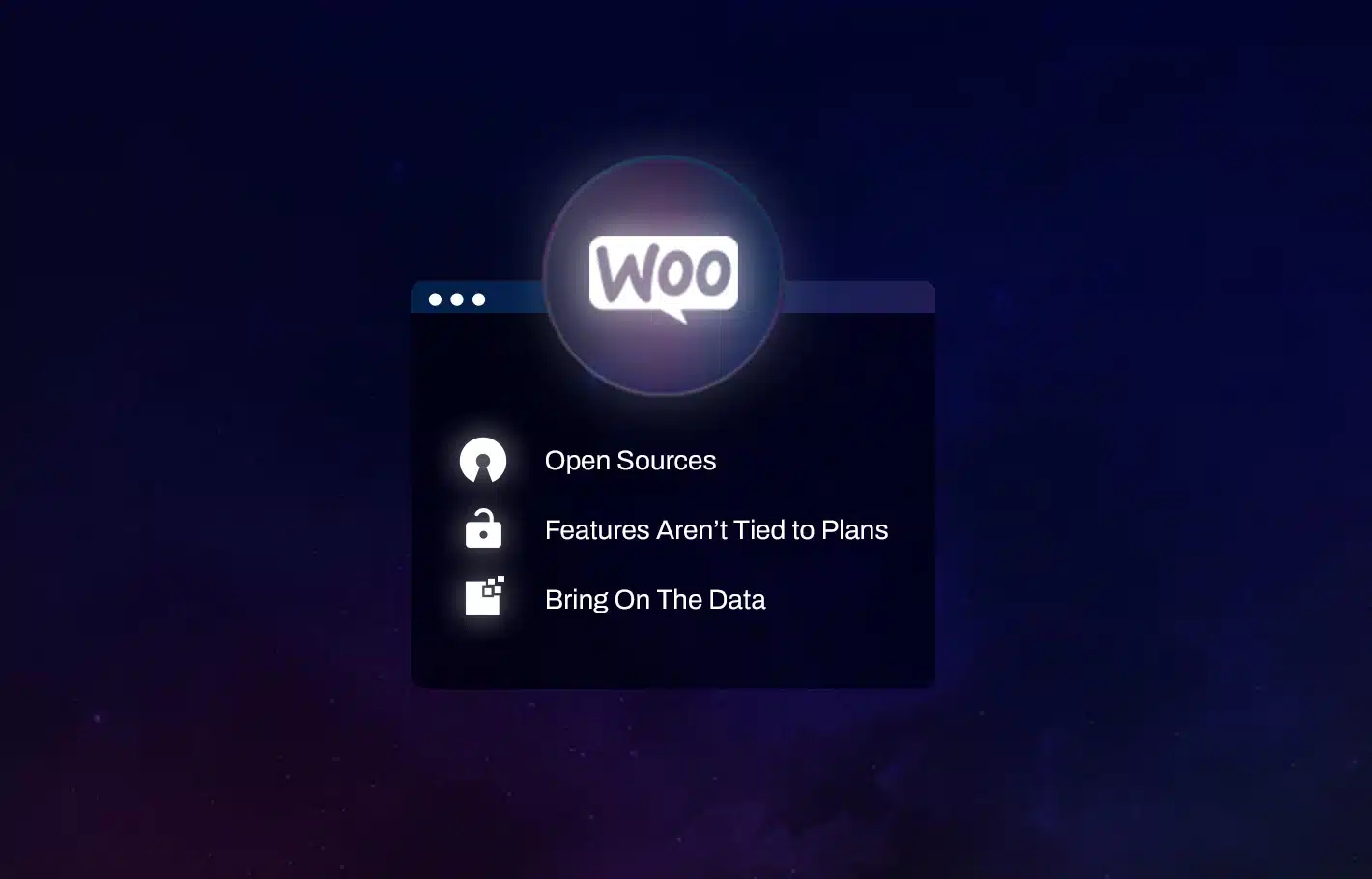
Open Source
One of the benefits of WooCommerce is that it’s open-source. This means that customers can create whatever they want their online presence to be. Customers can also customize WooCommerce to fit their specific business needs.
Features Aren’t Tied to Plans
Another WooCommerce benefit is that its features aren’t tied to plans. WooCommerce is a plugin for WordPress sites, which is also free. WooCommerce customers can add as many features as they want without worrying about additional costs.
Bring On the Data
Lastly, WooCommerce can handle data migration from another platform to its own. This makes WooCommerce ideal for growing businesses that need to upgrade their ecommerce solution.
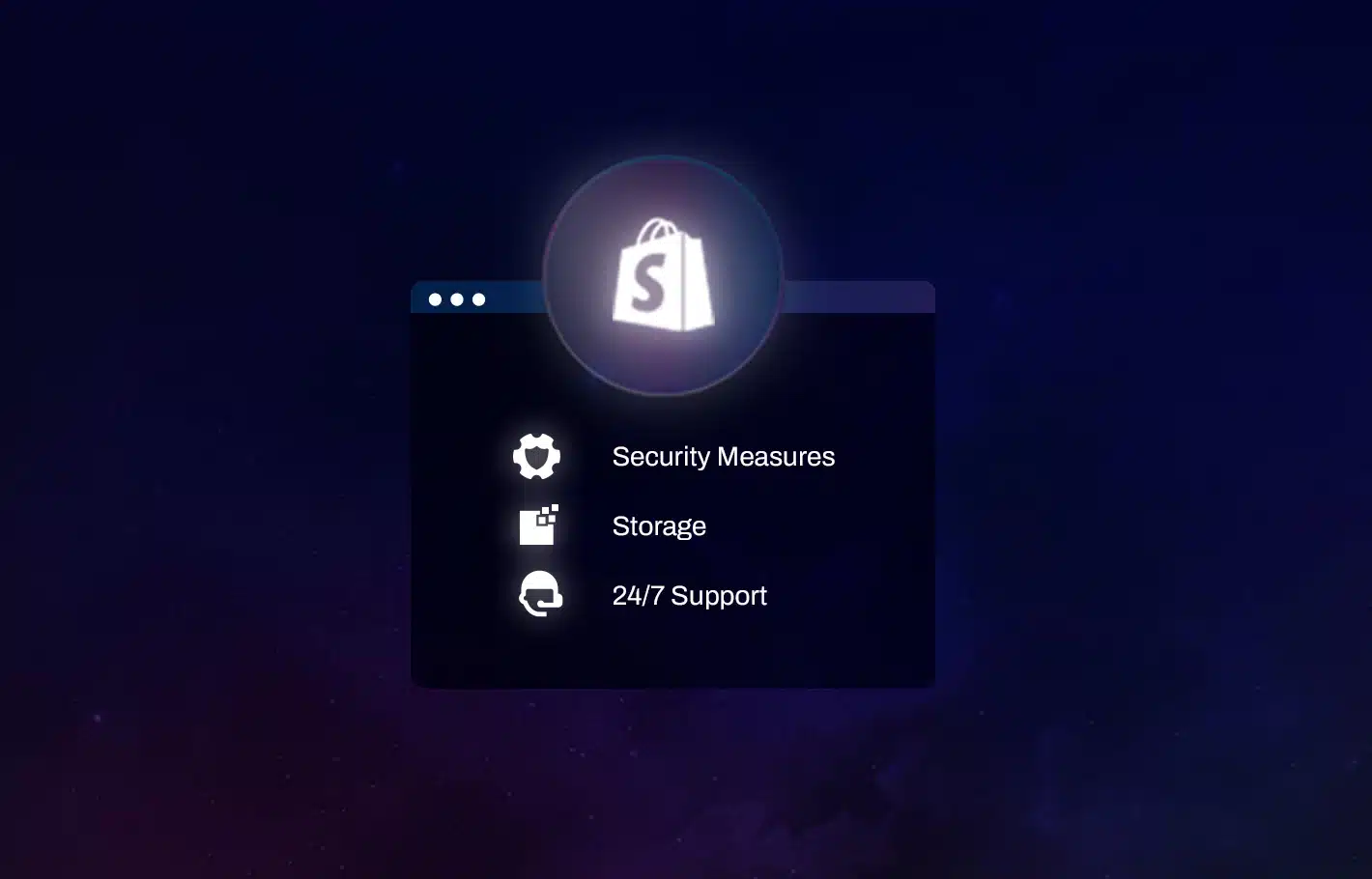
Security Measures
One of the main advantages of Shopify is that it takes security seriously. Shopify is PCI DSS compliant, which means it meets the highest standards for online security. This is important for online businesses because it gives customers peace of mind knowing that their personal and financial information is safe.
Storage
Another advantage of Shopify is that it offers unlimited storage. This is important for businesses with many product images or other types of media files. With WooCommerce, you need to purchase additional storage space as your business grows.
24/7 Support
Lastly, Shopify offers 24/7 support, which is important for businesses that need help outside of regular business hours. WooCommerce only provides support during business hours.
Both WooCommerce and Shopify have their pros and cons. It’s essential to evaluate your needs as a business before deciding which platform is right for you.
If your website is pure direct-to-consumer sales with little need for anything else, Shopify would be our recommended choice.
On the other hand, if you’re a more complex B2B, wholesaler, or just require a lot of pages that go outside the scope of traditional ecommerce sites, WooCommerce is likely the best fit for your business.
Want to bounce ideas off of the ecommerce experts? Contact us today! We’d be happy to help you any time!
Trying to choose between WooCommerce vs Shopify, but not sure which is better for you? Here are some additional resources and information.
Got questions on Shopify or WooCommerce?
Inquiring minds want to know whether Shopify or WooCommerce is the better choice for their ecommerce store. Here are some common questions we get about these two ecommerce platforms. If you have further questions don’t hesitate to reach out.
What are the disadvantages of WooCommerce?
While WooCommerce is a popular ecommerce platform, it is not without its disadvantages.
One of the biggest drawbacks of WooCommerce is that it is not a hosted platform. This means that users have to take care of their own hosting and security. This can be a challenge for those who are not familiar with web hosting.
Is WooCommerce good for ecommerce?
WooCommerce is a popular ecommerce platform that enables businesses to set up an online store quickly and easily. It is available as a plugin for WordPress, which means that it can be used with an existing WordPress website.
WooCommerce is a free and open-source platform, which makes it very attractive to small businesses and startups. WooCommerce is compatible with a wide range of payment processors and shipping providers. This makes it easy for businesses to accept payments and deliver orders to their customers.
As a result, WooCommerce is a good option for businesses that want a comprehensive ecommerce solution.
What is faster Shopify or WooCommerce?
If you’re looking for a fast and reliable eCommerce platform, you can’t go wrong with Shopify or WooCommerce.
Both platforms offer a wide range of features and are able to scale to meet the needs of businesses of all sizes. However, when it comes to speed, Shopify has the edge. Thanks to its caching system and CDN support, Shopify is able to load pages quickly, even during peak traffic periods.
WooCommerce is also a fast platform, but it doesn’t have the same level of speed and reliability as Shopify.
As a result, if speed is a priority for your business, Shopify is the better option.
What is faster Shopify or WooCommerce?
If you’re looking for a fast and reliable eCommerce platform, you can’t go wrong with Shopify or WooCommerce.
Both platforms offer a wide range of features and are able to scale to meet the needs of businesses of all sizes. However, when it comes to speed, Shopify has the edge. Thanks to its caching system and CDN support, Shopify is able to load pages quickly, even during peak traffic periods.
WooCommerce is also a fast platform, but it doesn’t have the same level of speed and reliability as Shopify.
As a result, if speed is a priority for your business, Shopify is the better option.
Is WooCommerce difficult?
WooCommerce is a popular ecommerce platform, but is it difficult to use? The answer depends on your level of technical expertise.
If you’re comfortable using WordPress, then WooCommerce will likely be fairly easy for you to use. However, if you’re not familiar with WordPress, then WooCommerce can be more challenging.
The key to using WooCommerce successfully is to take the time to learn how it works. There are plenty of resources available online, including tutorials and how-to guides. With a little patience and effort, you’ll be able to master WooCommerce and use it to run a successful online store.
Should I switch from WooCommerce to Shopify?
When it comes to running an online store-whether a cosmetics website or an apparel store-there are a few different options to choose from. Two of the most popular platforms are WooCommerce and Shopify. Both have their own pros and cons, so it can be tough to decide which one is right for your business. Here are a few things to consider when making your decision:
- Ease of use: Shopify is known for being much easier to use than WooCommerce. If you’re not very tech-savvy, Shopify may be a better option for you.
- Cost: WooCommerce is a free platform, while Shopify has a monthly subscription fee. However, WooCommerce does require you to purchase a domain name and hosting, which can add up over time.
- Flexibility: WooCommerce gives you more control over the look and feel of your store, as well as the ability to add custom plugins and extensions. However, this also means that there’s more room for error. If you’re not comfortable with website customization, Shopify may be a better choice.
Ultimately, the decision of whether to switch from WooCommerce to Shopify depends on your specific needs and preferences. Consider all of the factors before making your final decision.
Is WooCommerce more popular than Shopify?
There is no simple answer to the question of whether WooCommerce or Shopify is more popular. Both platforms have their own dedicated fan bases, and both have been used to create successful online stores. However, there are a few key factors that may give WooCommerce the edge in terms of popularity.
- First, WooCommerce is an open-source platform, which means that it can be customized to a greater degree than Shopify. This flexibility is appealing to many store owners who want to create a unique shopping experience for their customers.
- Second, WooCommerce is a WordPress plugin, which means that it integrates seamlessly with the world’s most popular content management system. This makes it easy for store owners to add products and manage their inventory, without having to learn a new platform.
- Finally, WooCommerce is free to use, while Shopify has a monthly subscription fee. For many small businesses, the cost of using Shopify can be prohibitive. In contrast, WooCommerce provides a cost-effective way to build an online store.
For these reasons, WooCommerce may be more popular than Shopify among store owners.
Further Reading On Web Design and Web Development Including WooCommerce and Shopify.
Interested in learning more about Shopify, WooCommerce, or just about web design and web development in general? Here are some handy resources to get you up to speed.
- How We Conduct a Shopify Audit
- What Matters in Website Navigation
- Our Top Retail Website Examples
- Our Top Beauty Website Examples
- The Importance of Shopify Speed Optimization
- Our Shopify Speed Guide Checklist
- 100 Ecommerce Website Design Tips
- How to Improve Mobile Ecommerce Conversions
- Top 24 Website Design Inspirations for 2022
- How Poor Website Navigation Can Affect Conversion Rate
- Common UI/UX Terms Used by Web Designers
- Your Must-Do Checklist For Launching a Website
- Simple Ways Improve To Your Website
- Web Design and Web Development: Understanding the Difference
- The Best Service Page Design Examples
- How to Design an Effective “About Us” Page
- Website Footer Design Best Practices
- Designing the Best Product Pages
- Understanding Category Page Design
Get Memorable Insights.
Sign up to receive actionable web design advice directly in your inbox monthly.
Get Memorable Insights.
Sign up to receive actionable web design advice directly in your inbox monthly.
Author
Jeff Gapinski is the President of Huemor where he helps plan the long-term strategic growth of the agency. Jeff is passionate about UI/UX, demand generation, and digital strategy.
What Do You Think?
Have feedback? Maybe some questions? Whatever it is, we'd love to hear from you.




![Website Design Standards We Follow [That You Should Too!]](https://huemordev.b-cdn.net/wp-content/uploads/2021/12/2023.04.04.Website-Design-Standards-We-Follow-That-You-Should-Too.jpg.webp)
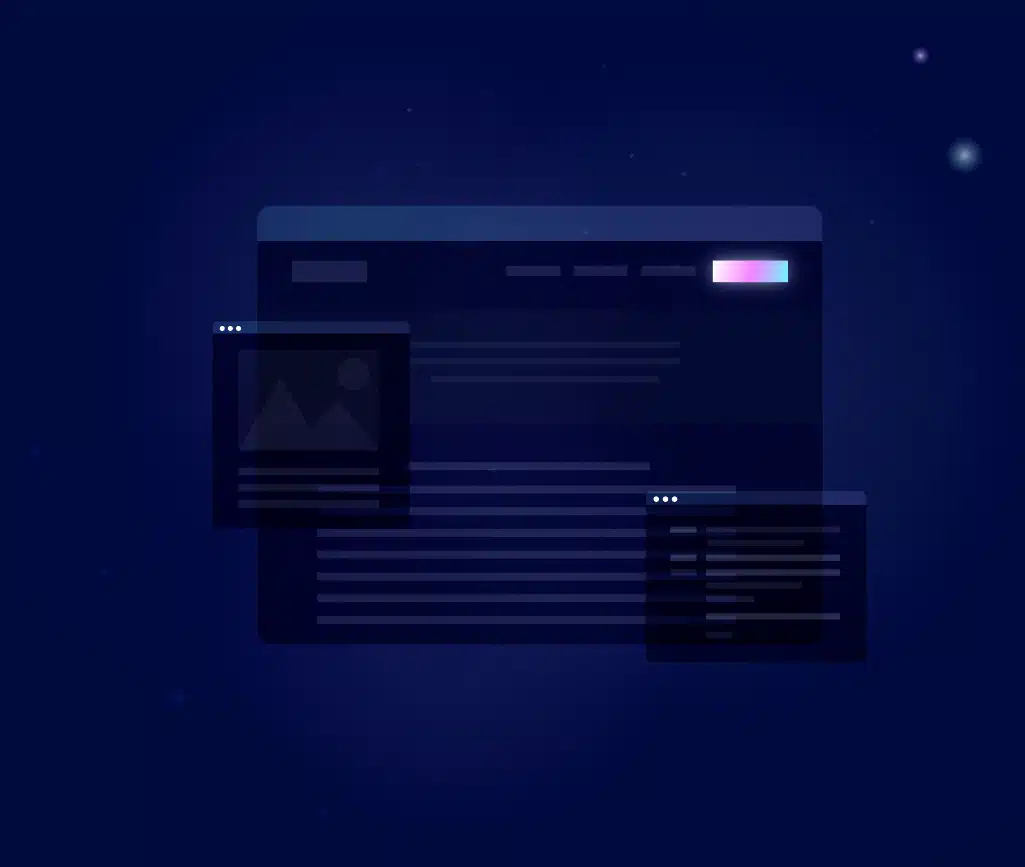
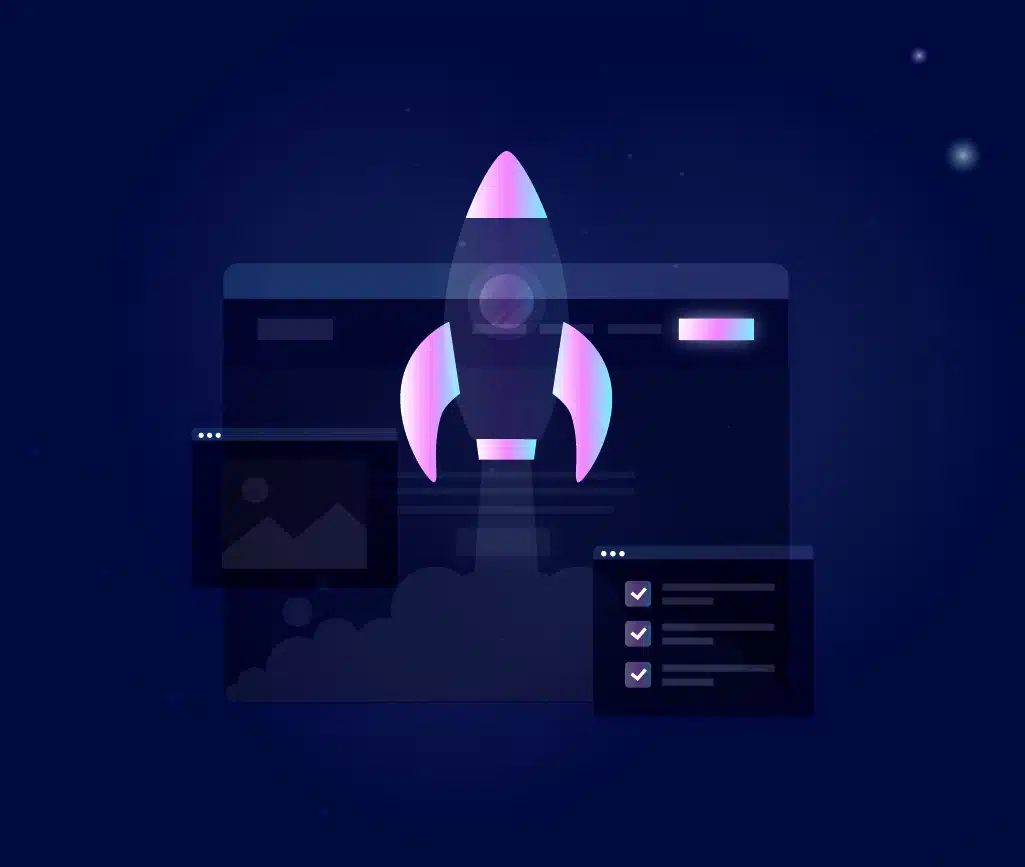

No comments found